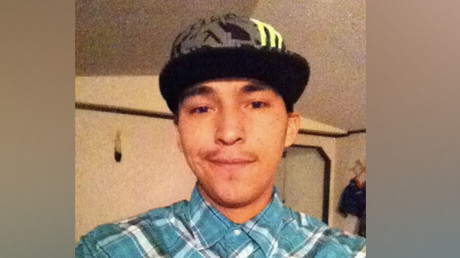Indigenous Canadian women still being forcibly sterilized, claims senator
A Canadian senator claims that unwilling indigenous women are still getting coerced into being sterilized across Canada. The senator now wants the “heinous” issue investigated nationwide.
Sterilization by tubal ligation – a process by which the fallopian tubes are either tied, burned or severed – is not just a shameful relic of Canadian history, Senator Yvonne Boyer claimed, but a process that is still happening across the country today.
According to a report published last year, the procedure is frequently carried out on indigenous women in Saskatoon, Saskatchewan. The report relies only on verbal evidence from women in the Saskatoon region, and was authored by Boyer herself.
After being contacted by survivors, Boyer now believes that the practice is far more commonplace than previously believed.
“If it’s happened in Saskatoon, it has happened in Regina, it’s happened in Winnipeg, it’s happened where there’s a high population of Indigenous women,” Boyer told the Toronto Star. “I’ve had many women contact me from across the country and ask me for help.”
One of those women, Liz, said that she was coerced by a Children’s Aid worker into having an abortion and being sterilized at an Ontario hospital when she fell pregnant at 17.
“It was a matter of me almost (being) cornered, if you will, by my worker at the time saying, ‘You better have an abortion because if you don’t, either way, we are going to take that child from you,’” Liz explained. While the procedure took place almost 40 years ago, Liz told the Star that she is still haunted by the experience.
“I’ve had a few dreams...where you could hear a baby crying or you could have a sense of a baby,” she said. “The first time I had it I didn’t know if it was a boy or a girl. And then another time I had it, it was a boy.”
In Saskatchewan, two of the women affected launched a class-action lawsuit last year, claiming $7 million in damages. Since then, almost 60 other women have joined the lawsuit. Alisa Lombard, a lawyer representing the women, has said that the practice was common in the provinces of Saskatchewan, Ontario, Manitoba and Alberta, and in the frozen Northwest Territories and Nunavut.
While Canadian Prime Minister Justin Trudeau almost scuppered the negotiation of a multibillion-dollar trade pact between the US, Canada and Mexico this year by pushing for the agreement to include a chapter on indigenous rights, Indigenous Services Minister Jane Philpott says that the issue of forced sterilizations is an unspoken and ongoing crime.
“The issue of forced sterilization of vulnerable people, including Indigenous women, is a very serious violation of human rights,” she told the Star, adding that it is “absolutely appalling and reprehensible.”
Further back in time, the province of Alberta was once a hotbed of eugenicist ideas. In 1929, the provincial government enacted the Sexual Sterilization Act of Alberta, a piece of legislation that allowed for the involuntary sterilization of the mentally disabled. The Alberta Eugenics Board was established to recommend people for sterilization, and the act was only repealed in 1972.
Indigenous Canadians, who made up between two and three percent of Alberta’s population, accounted for six percent of all sterilizations.




0 Comments:
Post a Comment
Subscribe to Post Comments [Atom]
<< Home